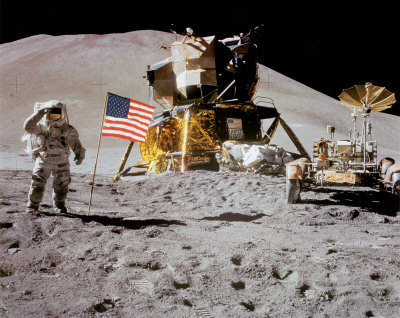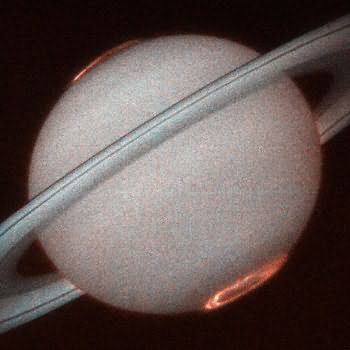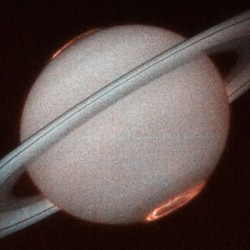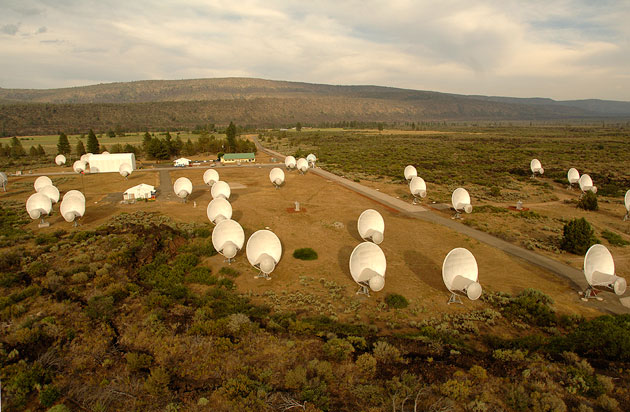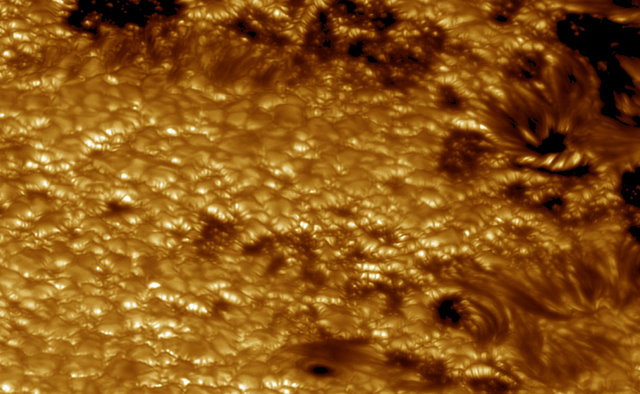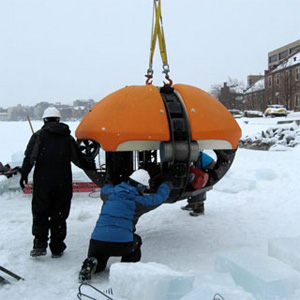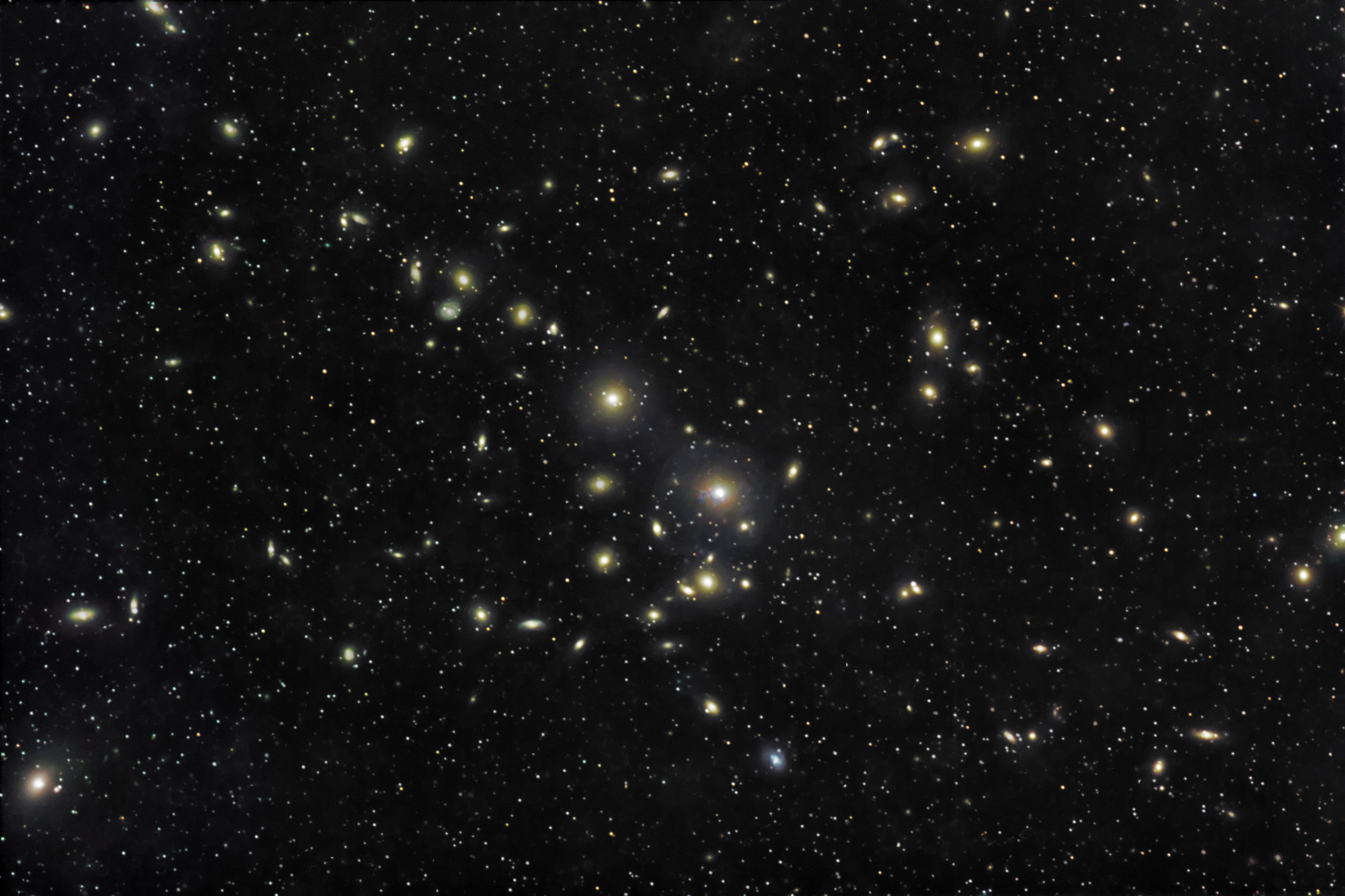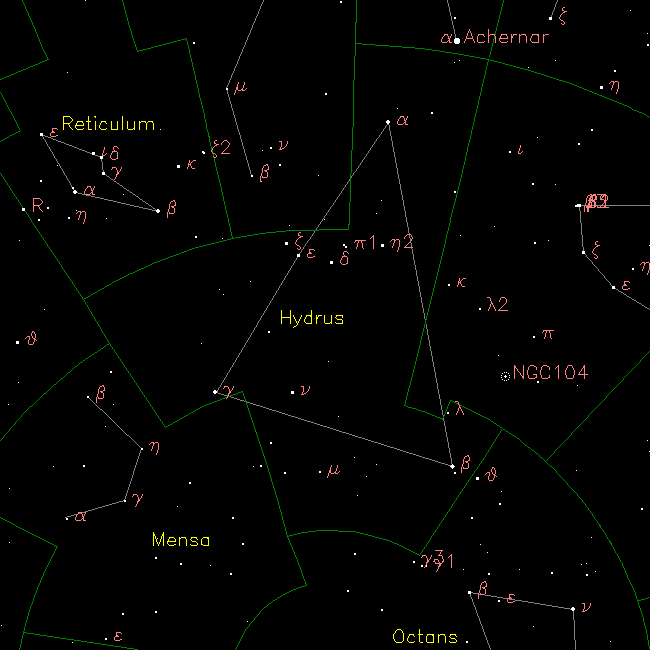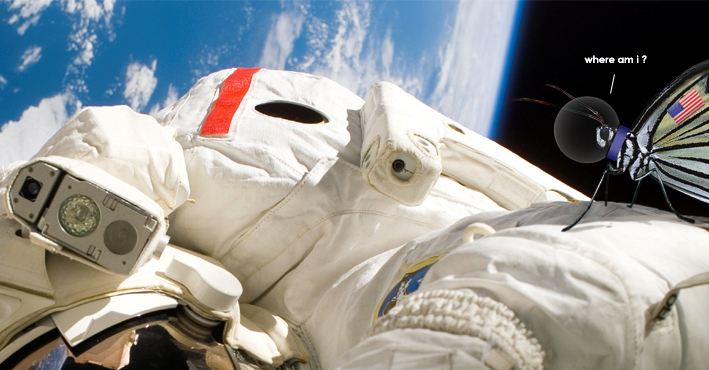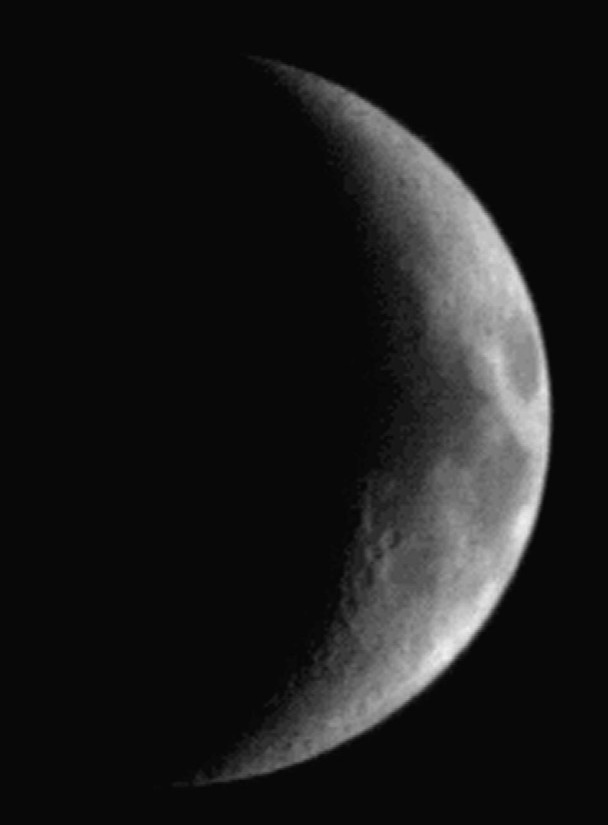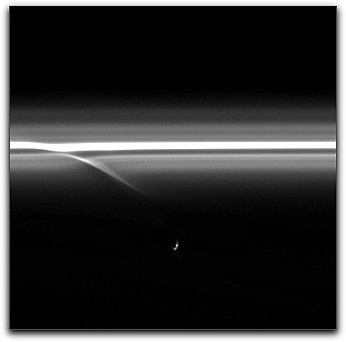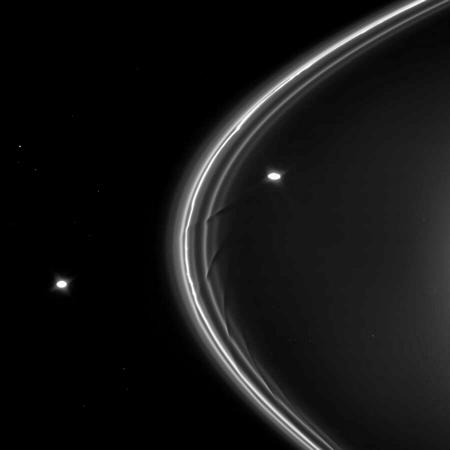[/caption]
What you’re looking at isn’t a Hubble Deep Field image peering into the furthest reaches of space. What you’re seeing is a galaxy field photographed with a 12.5″ telescope located right here on planet Earth aimed 2 degrees east of Algol. It’s a challenging galaxy cluster in Perseus known as Abell 426…
So, what exactly is it? The Perseus galaxy cluster consists of about 500 members located some 250 million light-years away. They are diffuse, they are faint, and they are dominated by radio source Perseus A – Seyfert galaxy NGC 1275. Just contained in this area alone is more than 200 trillion solar masses! In the X-ray band, no galaxy cluster out there shines brighter.
 Although George Abell died several years ago, one of the most enduring legacies he left astronomy is a catalog of galaxy groups that he compiled in the 1950’s. Since that time, it has been the goal of almost all backyard astronomers with larger telescopes to conquer as many of the Abell list as we possibly can, following in his footsteps hoping to catch just a glimpse of what he once saw using the plates of Palomar Observatory Sky Survey (POSS). Although our human eyes can never match what a camera can see, so much progress has been made since Abell’s time that revealing true science is within the grasp of the amateur.
Although George Abell died several years ago, one of the most enduring legacies he left astronomy is a catalog of galaxy groups that he compiled in the 1950’s. Since that time, it has been the goal of almost all backyard astronomers with larger telescopes to conquer as many of the Abell list as we possibly can, following in his footsteps hoping to catch just a glimpse of what he once saw using the plates of Palomar Observatory Sky Survey (POSS). Although our human eyes can never match what a camera can see, so much progress has been made since Abell’s time that revealing true science is within the grasp of the amateur.
Things that we can’t see visually, like gravitationally lensed quasars are revealed – interactions of dark matter and gas. In 2003, the Chandra X-ray telescope took a very close look at radio source 3C 84 and found it was blowing bubbles of plasma into the core of the cluster. To Chandra’s “eyes”, they appeared as holes in the image – pushing away the X-ray emitting gas. What exactly are they? Try relativistic particles – a particle moving at the speed of light. In astrophysics, jets of relativistic plasma are produced by the centers of active galaxies and quasars… and my friends? That can be captured in photographs, just like Kent’s.
According to the Chandra research team; “A similar front may exist round both inner bubbles but is masked elsewhere by rim emission from bright cooler gas. The continuous blowing of bubbles by the central radio source, leading to the propagation of weak shocks and viscously-dissipating sound waves seen as the observed fronts and ripples.” This resulted in the deepest tone ever detected from the Cosmos – a tone no human will ever hear. Or will it? Abell 426 calls loudly… And it calls very loudly to some of us.
A few years ago I decided to tackle the Perseus Galaxy Cluster with a 12.5″ telescope, too. But, I am a visual astronomer. There will never be a day when I can see with my eyes what Kent has captured with a 12.5 Planewave CDK, but perhaps those of you who hear the call of Abell 426 would like to know what it’s like to step into the heart of a galaxy cluster? This is from my personal observing reports:
“So, do I always do what you tell me to? Well, yeah! You are my Master… And if you tell me to go walk outside and look to the northwest? I will obey. And if you tell me the skies will clear? I will listen. If you hand me a dark skies night, one with 6.5 visibility and 7/10 stability… Put a 12.5 scope beneath my hands. If you give me a map… I will walk with you to the stars. If you give me a notebook and a mechanical pencil… I will study. And if you give me a galaxy field? I will do my best to make you proud. When I pulled the dob out, I could only see Perseus. Why is it that things happen this way? The cold wind would take a bite out of me quickly if I used the west side yard… But Algol is at maximum and it was simply all I could see! Why would I want to chase after an old study when the east sky is filled with new ones? Why? I don’t understand why! All I understand is that tonight I want Abell 426. Starting at Algol, I shift into my “weird” study mode and stop to ride the diffraction waves. I know I’m rather strange, but I’d really like to know if I can catch a spectroscopic difference between Algol at maximum and Algol at minimum. Yeah, I’m sure I’m probably being kinda’ dumb because my equipment is so primitive… But I’m curious. OK? Making my notes, I put the diffraction grating away once again. I learn. Therefore I am. Now, let’s rock and roll…
Abell 426 has been a longstanding favourite of mine. It is a curious galaxy cluster in the respect that the finer the night, the more galaxies will reveal themselves. While tonight is not the most exceptional night I’ve ever encountered, it is a fine one for galaxy studies. Brushing Algol away in the eyepiece, I close my eyes and sing along with the music for several minutes, mentally and visually preparing myself for faint studies. I am becoming accustomed to the cold, and when my eyes are ready? It’s time to go to the finder, for the first study lays right in the field with a star.
The NGC1224 requires wide aversion. It is faint, round, and shows some concentration toward the nucleus with patience. Held indirect, this small galaxy has a UGC-like signature. Next stop on the hop is the NGC1250. Very diffuse and small…. Also requiring wide aversion. While allowing the eye to bounce around the field, it is possible to make out a slight north/south tilt to this galaxy that may indicate it to be a spiral. Curiously enough, it is during this motion that a pinprick of a nucleus can be detected. Pushing on toward the heart of the Perseus Galaxy cluster, my next destination is a chain of three. First study mark is the NGC1259. Whoa! Extreme aversion here, boss… Very, very diffuse and faint. It can only be caught by focusing attention on the tiny star in the westward drift. The NGC1260 only requires slight aversion, however. It is small and somewhat diffuse. Definitely ovoid in structure… And definitely the easiest to see of these three! The NGC1264 also requires very wide aversion. Very faint and diffuse. Very round…. Very challenging! Now, triangulating with this series, it’s time to go for the NGC1257. Very faint, diffuse and small with a concentration toward the core, it holds a little surprise. There’s a tiny star at the northeast end that allows one to see upon wide aversion that the galaxy itself seems to migrate to the northeast/southwest. Excellent!
From here I have the option of continuing on the same trajectory or doing a lateral “thing”. I find myself grinning, because I know from past experience that my maps don’t always reveal everything there is to be seen in such a cluster. I’ll have to be awfully careful when going toward the heart of Abell 426, or I’ll lose my sense of direction and darn well get lost! Oh well, eh? It wouldn’t be the first time I’ve been told to do so.
The NGC1271 skirts the most populated part of this Abell cluster. If I’ve got the right one, we’re talking about a super wide aversion, very faint, very small patch that is barely capturable. Even patience and my own set of tricks can draw nothing more than a slightly regular contrast change in this area. Next up is an extremely challenging triple. The NGC1267, NGC1268 and NGC1269 are three incredibly tiny, very diffuse round gems that would be indistinguishable at lower power. Phew! This little trio is really bad… I couldn’t even qualify these as “hairy stars” because they’re so diffuse!
Breathing quietly so I don’t fog anything up, right now I’d just about sell my soul for a cup of chai and a few minutes by the fire. But, I realize that if I stand down now, I’ll lose whatever sense of orientation that I’ve gained. (and that, coming from a blond, is no joke.) I can see the “heart” of Abell 426, and I know how easy it would be to just let go… Enjoy! Not care? Not hardly. (don’t stop, ~T…. just don’t stop.)
NGC1273 is faint. It requires aversion, but the brighter core region holds up to indirect vision. The NGC1272, is also round… Almost planetary in appearance. This is a galaxy that is definitely a player in this field!! The NGC1270 is very diffuse and a wide aversion. It contains a very small, almost stellar nucleus. Now the cluster is getting thick and tight. Can I do this and do it correctly? Hey, hey… Let’s give it a go. I can’t do anything worse than be wrong, eh? NGC1279 is faint, diffuse, but holds. It stretches just every so slightly, like a thin smear held at slight aversion to the north/south. It is even with no nucleus present. The NGC1274 is very faint and very diffuse and even. It is best seen while concentrating on the NGC1279. Just an incredibly misty oval. The NGC1275… (holy sh*t! one i can see!!) is very bright compared to all the previous studies. Most definitely has a bright and easily held direct nucleus.
And now I’m laughing out loud, because these little puppies are everywhere. Much like studying Virgo clusters, once you see a bright galaxy, what seems like swarms come out to play all around! I guess it’s time for me to bow gracefully out of the middle of this dance before I make a great fool of myself. Let’s just head back toward the outskirts and although these might not be considered to be part of the Abell 426, at least I stand a better chance at identification!
Going for a pair, I find the NGC1282 to be diffuse, slight in size and quite ovoid. Very even in structure, no hint of a nucleus even a full avert. The companion, NGC1283, is very diffuse and I probably wouldn’t have even caught it except for that I was looking at some small field stars that triangulate in this area when it made its’ foggy appearance. Now for the NGC1294 and NGC1293… Wide aversion shows two round fuzzies with prickly nucleus structure. The pair reminds me of two impossibly small “gone to seed” dandelions waiting to be scattered on the cosmic winds… Huh? Listen. When I start writing junk like that in my notes, I’m either high on photons or nearing hypothermia. Or maybe both, eh?”
If the Perseus Galaxy cluster calls to you in a low tone… listen. It called to George Abell in 1958 and it called to Kent Wood just a few days ago. We’re glad it did…
Many, many thanks to AORAIA member Kent Wood for his superb image and allowing us to share what our eyes cannot see!
Full Rez Image

